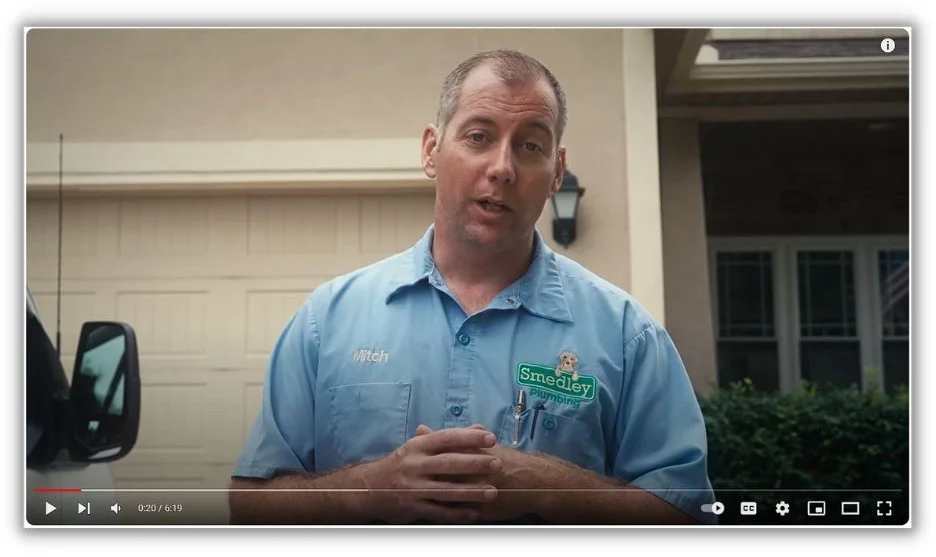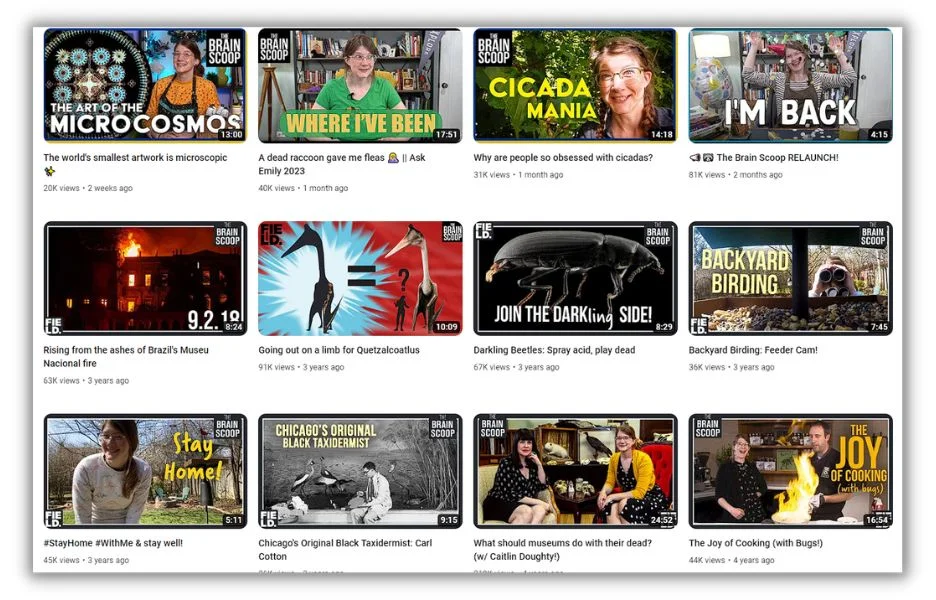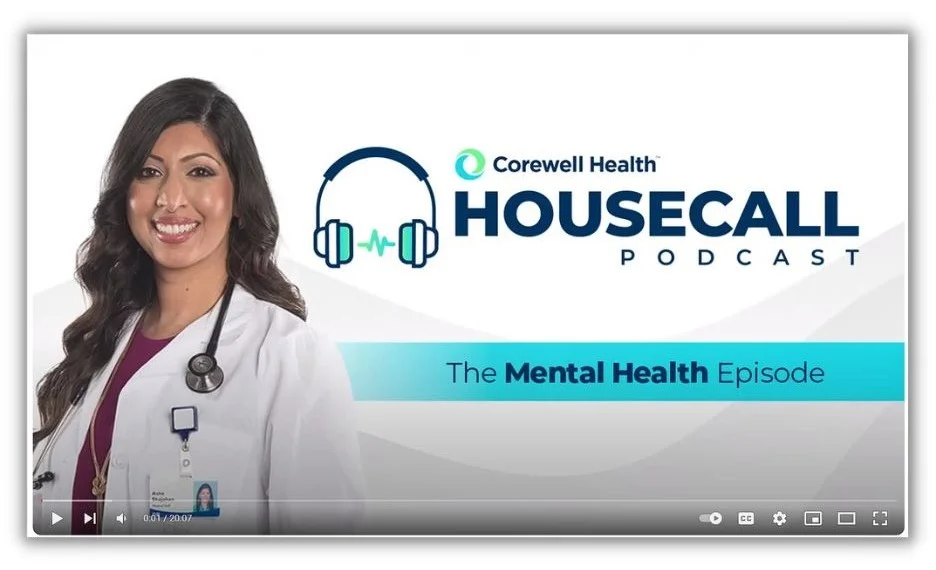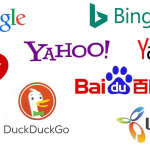We live in the golden age of video marketing. 68% of consumers prefer watching videos to learn about new products or services. Plus, 64% of consumers make a purchase after watching branded social videos. With stats like that, it’s clear why video is such an important medium for marketing.
But the truth is, no matter how amazing your videos are, they won’t help your business if no one can find them. That’s where video marketing SEO comes in. With a little optimization, your cinematic masterpiece (or 60-second explainer video) will bubble up to the top of more searches on Google and YouTube.
Contents
- Choose the right video hosting platform
- Use targeted keywords in titles, descriptions, and tags
- Optimize video for mobile viewing
- Implement video transcripts
- Use high-quality and engaging thumbnails
- Implement video sitemaps
- Pay attention to video length and clarity
- Monitor analytics and engagement metrics
- Address technical SEO
9 best practices for video marketing SEO
Your marketing videos deserve to be seen, not tucked away on a digital shelf. These video marketing SEO tips will help ensure that customers find them whenever they search.
1. Choose the right video hosting platform
Different video hosting platforms cater to different goals, such as increasing website traffic, enhancing brand awareness, or generating ad revenue. The platform you choose determines how search engines index your videos and how they contribute to your overall SEO strategy.
- YouTube is ideal for maximizing social sharing and gaining a wider reach, which is beneficial for all industries. Plus, YouTube is the world’s second-largest search engine, and its videos surface on many Google results pages, so it’s where you’ll want to focus your optimization efforts.
- Vimeo is great for high-quality video presentations suitable for professional services and educational content.
- Wistia is perfect for healthcare marketing, retail, and professional services because it offers detailed analytics and marketing tools.
- Brightcove is best for large-scale video campaigns as it offers extensive campaign management tools, making it a good choice for retail and healthcare sectors.
You can use platforms like TikTok or Snapchat to engage a younger audience through short, trendy video content.
Another option to make your video content exclusive to your website is to host it on web hosting platforms like Wix or Squarespace. This way, videos on your website will not display ads or recommend other content, keeping viewers focused solely on your offerings.
Look at this video from Smedley Plumbing.

A Day in the Life of a Plumber by Smedley Plumbing.
A simple video of the team at work got over 63,000 views. Some other educational videos on the business’s channel even have hundreds of thousands of views. YouTube was the perfect video hosting platform for them to promote their business, and hosting their videos there has helped them gain quite a following.
Before choosing one platform over others, evaluate each platform’s SEO features, like metadata customization, integration with Google Analytics, and embedding capabilities.
 Video works well on most marketing channels. Download The Ultimate Guide to Cross-Channel Marketing to learn how to make them all work together.
Video works well on most marketing channels. Download The Ultimate Guide to Cross-Channel Marketing to learn how to make them all work together.
2. Use targeted keywords in titles, descriptions, and tags
Using keywords in your video’s title, description, and tags helps video search algorithms understand what your video is about, thus improving the likelihood of it appearing in relevant searches.
Keyword research for videos is the same as for articles and blog posts. You can see what’s popular in your niche on YouTube and then use SEO tools to find keywords related to those topics.
Once you decide on a primary keyword, include it in the title. Also, write a detailed description using keywords, and make sure it reads naturally and provides context about the video. Add relevant keywords as tags to help categorize your video and improve its chances of being found in related searches.
Returning to Smedley Plumbing’s example, they identified ‘a day in the life of a plumber’ as the keyword. Their description has several relevant keywords, such as American Standard toilet, Moen faucets, Bradford White water heater, and sump pump discharge pipe. So when you search any of these keywords on YouTube, their video has a good chance of showing up. The same applies to video search results on Google and Bing.
 Download this Complete Guide to Local Keywords to find the terms your customers search.
Download this Complete Guide to Local Keywords to find the terms your customers search.
3. Optimize video for mobile viewing
Mobile-optimized videos offer a better user experience, leading to longer watch times and higher engagement. With more than 50% of web traffic coming from mobile phones, optimizing videos for mobile viewing is important, as search engines favor content that performs well on mobile devices.
To make sure your videos work well on different types of mobile devices, do the following:
- Use a video format widely supported on mobile devices, such as MP4 (with H.264 video codec and AAC audio codec).
- Use a mobile-friendly aspect ratio, such as vertical (9:16) or square (1:1) format.
- Compress video files to reduce their size so they load faster without losing quality.
- Use tools like Google’s PageSpeed Insights to test how quickly your video loads on mobile devices, then reduce load speed to reduce bounce rates.
- Make sure your website and video player are responsive and adjust to different screen sizes seamlessly.
4. Implement video transcripts
Video transcripts make your content accessible to a wider audience, including non-native speakers and those with hearing impairments. Transcripts also provide additional text for search engines to index, improving your video’s SEO by making it more likely to appear in relevant searches.
Look at this video by Elyse Breanne Design.

The ‘cc’ option in the video helps viewers as well as search engines.
The video has an auto-generated transcript that helps search engines understand that it is about the opening of a retail storefront. If you want to take control of the transcript, it is a much better option to upload a transcript file to the hosting platform.
Also, naturally include relevant keywords in your transcript, just as you would in an article or a product page. Then, provide a link to the transcript on your website (along with the video) to enhance accessibility and SEO.
5. Use high-quality and engaging thumbnails
A high-quality, engaging thumbnail significantly increases the click-through rate of your video, signaling to search engines that your content is relevant and appealing. In fact, 90% of the top-performing videos on YouTube have a custom thumbnail. It is safe to say that the number wouldn’t be that different on other platforms.
Look at all the custom thumbnails on TheBrainScoop.

All the thumbnails have:
- TheBrainScoop logo
- An interesting image
- A title that’s slightly different from the title listed on the channel
Most people will notice the thumbnail first and read the title later, so it is important to include the title in the thumbnail image. The thumbnail is not just a YouTube-specific phenomenon; even if you host videos on your website, it will influence your clickthrough rate and SEO.
When designing the thumbnail:
- Use vibrant colors (that align with your brand guidelines), clear and engaging imagery, and readable text to make your thumbnail stand out.
- Make sure the thumbnail accurately represents the content of your video to attract genuinely interested viewers.
- Just like TheBrainScoop, use a consistent style for thumbnails to build brand recognition and trust with your audience.
6. Implement video sitemaps
Video sitemaps help search engines find and index your videos more effectively. A video sitemap provides detailed information about the video content on your site, making it easier for search engines to understand and properly rank your videos in search results.
The detailed information in the sitemap helps search engines understand the video content better, which improves the likelihood of these videos appearing in relevant search results.
Use tools like XML Sitemap Generator for Google, xml-sitemaps, or WriteMaps to generate a sitemap for your videos. Include details like video title, description, play page URL, thumbnail URL, and raw video file URL.
Submit your video sitemap to search engines like Google and Bing to make sure they are aware of all the video content on your site. Also, keep your video sitemap updated with new videos and remove any that are no longer available.
7. Pay attention to video length and clarity
Appropriate video length holds viewers’ attention, while clarity (both in terms of visual quality and content) helps you get your message across. Match your video length with your specific audience and the purpose of the video.
Here’s what the length should be based on the type of video:
- Company culture videos: Best kept at 2 to 4 minutes, allowing enough time to showcase company values and environment.
- Sales videos: These should be between 30 and 90 seconds, with shorter videos for cold prospects and longer ones for more engaged audiences.
- Homepage videos: Ideal length is 30 to 60 seconds, acting as a quick introduction to your brand or services.
- Landing page videos: Video landing pages should be 30 to 60 seconds long and focused on capturing attention and driving conversions.
- Explainer videos: Optimal at 60 to 90 seconds, providing enough time to educate viewers about your product or service.
- Email videos: These should be around 30 to 45 seconds, concise enough to maintain interest and deliver the message effectively.
- Testimonial videos: Best at 2 to 4 minutes, allowing sufficient time for detailed and persuasive customer stories.
All of the above videos can be hosted on your website or a third-party platform and are used for different types of campaigns. If you plan to do videos for social media marketing, use the following lengths:
- TikTok: The optimal duration is between 10 and 15 seconds, although videos can be up to 60 seconds. TikTok does support longer videos now, but we recommend placing them on YouTube instead.
- X (formerly Twitter): Recommended length is between 20 and 45 seconds, fitting the platform’s brief and concise style.
- YouTube: Ideal for longer content, ranging from 5 to 15 minutes, perfect for tutorials, case studies, and interviews.
- Facebook: Facebook videos should be 30 to 90 seconds long, aligning with users’ attention spans on this platform.
- Instagram: The optimal length is 30 to 45 seconds, accommodating the platform’s preference for short, engaging clips.
- LinkedIn: LinkedIn is suitable for slightly longer videos ranging from 30 seconds to 5 minutes, catering to a professional audience interested in detailed content.
Look at Corewell Health’s strategy on YouTube and LinkedIn.

On YouTube, Corewell Health posts podcasts that go up to 20 minutes.
On LinkedIn, most of the business’s videos are around the one-minute mark. They do post links to podcasts, but those links lead the user from LinkedIn to their website. That’s because they know people scrolling through LinkedIn won’t stop for a long video, but they will definitely watch shorter videos. When people actually watch your videos from the beginning to the end, it helps your SEO.
8. Monitor analytics and engagement metrics
Analytics and engagement metrics provide insights into viewer behavior, preferences, and engagement levels. These are key indicators of the effectiveness of your video marketing SEO strategy:
- View count: This basic metric indicates how many times your video has been viewed, giving a direct measure of its reach.
- Watch time/audience retention: This shows how long viewers are watching your video and at what point they drop off. Longer watch times and high retention rates mean your content is engaging.
- Click-through rate (CTR): The percentage of viewers who click on your video after seeing it in search results. Higher CTR means your video titles and thumbnails are working well.
- Engagement metrics: Includes likes, comments, shares, and subscriptions, which reflect how viewers are interacting with your content.
- Conversion rate: If your video has a specific call to action, tracking conversions is crucial to understand how effective the video is in achieving its goals.
- Traffic sources: This identifies where your video’s views come from, like search engines or direct links. It helps you understand how viewers discover your video.
- SEO rankings: Track where your video appears in search results for targeted keywords over time.
- Social shares: Measures the number of times your video has been shared on social media platforms.
- Backlinks: The number of external sites linking to your video or its landing page impacts its search engine ranking.
By regularly monitoring these metrics, you can assess the performance of your video content and refine your SEO and content strategies for better results.
9. Address technical SEO
Factors that affect technical SEO are crucial for enhancing the accessibility, user experience, and search engine visibility of your videos. These factors make sure that your videos are easily discoverable, load quickly, and are viewable across a wide range of devices.
Here are a few of the common technical SEO issues to check that we haven’t already addressed:
- Responsive design: The website and video player are responsive and adapt to various screen sizes, especially for mobile devices.
- File size and format: The videos are compressed to reduce loading times without sacrificing quality.
- Schema markup: You implemented schema markup (structured data) for your videos to provide search engines with more information about your video content.
- CDN for video hosting: You used a Content Delivery Network (CDN) to ensure faster loading of videos across different geographical locations.
- HTML5 compatibility: The video player and content are compatible with HTML5 for broader accessibility across devices.
- Secure hosting (HTTPS): The videos are on secure (HTTPS) platforms or websites for better trust and ranking by search engines.
- Cross-browser compatibility: The videos play smoothly across different web browsers.
Use video marketing SEO to gain visibility and subscribers
The video marketing trend continues to gain ground as one of the best mediums for engaging customers across all channels. That’s great news since capturing and sharing videos is also easier.
The downside is that where there’s a lower barrier to entry and big rewards, there’s also lots of competition. Being mindful of video marketing SEO will help you land and hold top spots on results pages.
Here are the most important tasks to tackle when optimizing your videos for search:
- Choose the right video hosting platform
- Use targeted keywords in titles, descriptions, and tags
- Optimize video for mobile viewing
- Implement video transcripts
- Use high-quality and engaging thumbnails
- Implement video sitemaps
- Pay attention to video length and clarity
- Monitor analytics and engagement metrics
- Address technical SEO
The post 9 Tips for Better Video Rankings (& More Views!) appeared first on LocaliQ.













